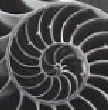
Problems for
Intermediate Methods in Theoretical Physics
Edward F. Redish
 |
Problems for Edward F. Redish |
Solution
By a "vector" we mean an element of a linear space -- a set of objects called vectors together with a set of objects called scalars (numbers). The vectors have addition defined (you can add them, there is a zero vector, and every vector has a negative counterpart), and you can multiply the vectors by the scalars. The expected properties of scalar multiplication hold (e.g., there is a unit, every number other than 0 has a multiplicative inverse, and distribution laws work as expected).
Typically we say that "a vector has magnitude and direction" but this is not general. Some do, some don't. In physics, most of the vectors we use do have a magnitude and a direction in three space. Even so, there are different kinds of vectors. They may have different dimensions (e.g., a displacement and a velocity) or may transform differentlly when the reference origin is changed (e.g., location vectors change, displacement vectors and velocities don't).
Some vectors (e.g., Electric, Magnetic, and Gravitational fields) are attached to particular points in space (and indeed, to every point in space). Other vectors (e.g., momentum or angular momentum) can be considered "floating" -- they can be placed at any point in space or moved around as long as their direction and magnitude don't change.
Some vectors are purely mathematical -- just sets of numbers -- and don't really live "in space" since they have no dimension.
| University of Maryland | Physics Department | Physics 374 Home |
|---|---|---|
 |
 |
 |
Last revision 9. November, 2005.